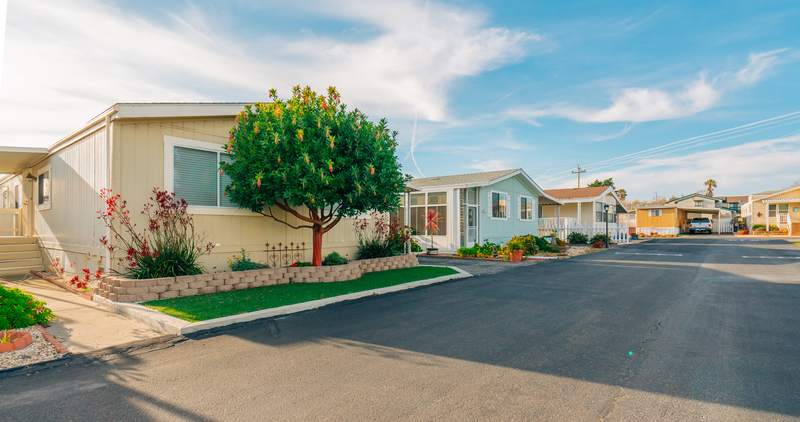A mortgage from the Veterans Affairs (known as a VA loan) can be an affordable way to get into a home. However, the way personal situations and the economy can change, you may still have trouble making ends meet. Fortunately, a VA Interest Rate Reduction Refinance Loan (VA IRRRL) allows VA borrowers to restructure their mortgage to obtain a better interest rate or monthly payment. This refinance is exclusive to VA loan holders, providing a quick, inexpensive way to solve mortgage woes.
What Is A VA IRRRL?
A VA IRRRL is a mortgage refinance option for eligible veterans, active-duty service members and surviving spouses with a current VA home loan. VA IRRRLs allow borrowers to reduce their interest rate and decrease their monthly mortgage payments. Also called a Streamline refinance, this VA loan refinance has a faster implementation period than other loans, allowing you to start saving money on your house payment quickly.
The government created the VA IRRRL (pronounced “earl”) in 1980 to help veterans obtain more affordable mortgage payments. Specifically, this refinance tool can convert adjustable-rate mortgages to fixed-rate mortgages, change loan terms and lower interest rates.
Remember, qualifying veterans, current military members, and their surviving spouses are eligible for a VA IRRRL if the new terms provide a prompt, clear financial benefit. For example, a popular goal is receiving a lower interest rate or monthly payment. On the other hand, VA IRRRLs aren’t for situations when you want to change lenders or tap your equity.
View Your Refinancing Options
See recommended refinance options and customize them to fit your budget.
See What You Qualify For
Buy A Home
Discover mortgage options that fit your unique financial needs.

Refinance
Refinance your mortgage to have more money for what matters.
Tap Into Equity
Use your home’s equity and unlock cash to achieve your goals.
Understanding How The VA IRRRL Program Works
The IRRRL program makes the refinancing process faster than other refinance types because it typically requires less documentation and paperwork. For instance, the VA doesn’t require an appraisal, credit check or employment verification for a Streamline refinance (although your lender might require them). Instead, the primary qualification borrowers must show is that they’re current on their mortgage payments. In addition, a title search and title insurance are necessary. The borrower can also roll any incurred closing costs into the new loan amount, minimizing upfront expenses.
An IRRRL is only valid for refinancing a property with an existing VA loan. Valid properties for this refinance include single-family houses, condominiums and manufactured homes. The refinance can also be with a new lender if the borrower chooses, but changing lenders cannot be the sole reason for the refinance.
The VA requires that the rate on the new loan is reduced to create a “net tangible benefit” to the borrower as a result of the refinance. However, this benefit isn’t related to the borrower’s financial status, meaning proving a financial hardship isn’t necessary. In addition, the refinance can’t payoff additional liens. Instead, the benefit comes from changing the loan terms and providing an immediate financial advantage.
VA IRRRL Requirements And Eligibility
To get a VA Streamline, you must have an existing VA home loan, make at least 6 consecutive monthly payments, and be at least 270 days after closing on your original loan. VA members with conventional loans can’t refinance with an IRRRL. Additionally, you must be an eligible active-duty service member, reservist, veteran or surviving spouse (the spouse of someone who passed while in service or as a result of a service-connected disability) with a VA loan.
Furthermore, the IRRRL only applies to the VA loan amount. Laws prohibit the refinance from paying other liens on the property, such as a separate home equity loan, mechanic’s lien or HOA fees. While IRRRLs are typically for your primary residence, a rental home you previously lived in may be eligible.
Remember, proof of residence is mandatory for obtaining an IRRRL. As a result, your lender will request bank statements, utility bills or pay stubs with your name and address.
Lastly, as mentioned above, the lender must affirm the borrower reaps an indisputable financial gain from the refinance.
VA IRRRL Rates
While VA refinance loans usually have some of the lowest interest rates on the market, rates vary from client to client. Each borrower’s refinance rate depends on loan size, credit score and term length.
Mortgage rates may change daily. Here are the current mortgage interest rates for VA loans, as of October 2, 2023:
- VA 30-Year Fixed: 7.125% interest rate, 7.673% APR
- VA 25-Year Fixed: 7.125% interest rate, 7.751% APR
- VA 20-Year Fixed: 7.25 % interest rate, 7.983% APR
- VA 15-Year Fixed: 6.75% interest rate, 7.663% APR
Find out if a 15-year fixed loan is right for you.
See rates, requirements and beneifts.
VA IRRRL Program Pros And Cons
Now that you understand the details of a VA Streamline refinance, here’s why you might pursue or avoid this type of loan.
VA IRRRL Pros
- Expanded equity access: The VA IRRRL enables borrowers to refinance up to 100% of their home’s equity if the loan-to-value ratio is within the VA’s limits and the refinance isn’t more than the home’s value. Keep in mind, cash out is not allowed unless it is reimbursing the borrower fir energy efficient improvements.
- Reduced funding fee: VA loans don’t require mortgage insurance, decreasing the origination fee. Instead, you pay a flat funding fee of 0.5% of the loan amount on closing day or by rolling it into the loan. The funding fee is also tax-deductible. Furthermore, as with all VA loans, if you have a service-connected disability, are a qualified surviving spouse, or are an active-duty service member who has received the Purple Heart, you’re exempt from the funding fee.
- Fewer hurdles: Borrowers face fewer obstacles when obtaining an IRRRL. For example, if your lender requires an appraisal, a drive-by-appraisal is usually sufficient. Likewise, a pest inspection may not be required unless recommended by the appraiser, and credit requirements are lower than other loan types.
- ARM conversion: Refinancing with a VA Streamline means you can change your adjustable-rate mortgage to a fixed-rate mortgage. ARMs rates fluctuate with the market, while fixed-rate loans offer an unchanging interest rate. This way, your payment won’t change over the life of the loan.
- Reduced monthly expenses: Borrowers typically refinance their VA loans to receive a lower interest rate or extend the loan term. These changes decrease your monthly payment.
VA IRRRL Cons
- Late payment disqualification: You must be current on your payments to refinance your VA loan. Specifically, missing a monthly payment in the last 6 to 12 months can disqualify you from an IRRRL.
- Current property restrictions: A VA IRRRL replaces your VA loan on your home. As a result, you can’t get a new property or pay off another property through the refinance.
- Allowable only in cases of tangible net benefit: Refinance must provide a benefit to the veteran such as a reduction in monthly payment, reduction in interest rate or moving from an ARM to a fixed rate.
- Closing costs: The IRRRL incurs a 0.5% funding fee and up to 1% closing costs. These costs are percentages of the loan amount. While borrowers can roll these expenses into the loan amount, doing so raises the loan balance and subsequent interest charges.
- Extended term raises expenses: Although extending the term can reduce your payments, doing so can increase how much interest you’ll pay over the life of the loan. In addition, paying the loan in full will take longer.
- Time and payment requirements: You must make six consecutive on-time monthly payments on your VA loan before applying for the VA IRRRL. In addition, you must be at least 270 days out from the closing date on your original loan. Finally, 210 days must elapse from after your first mortgage payment and the closing day of the IRRRL.
When To Consider A VA Streamline Refinance
Here are some scenarios where a VA Streamline refinance may be worth it and who would benefit the most:
- Relief from high interest: If current interest rates are significantly lower than the rate on your existing VA-backed loan, a Streamline Refinance can help your budget. Refinancing to a lower rate will produce lower monthly payments, saving you money over the life of the loan. Plus, changing to a fixed-rate loan if you have an ARM means you’ll lock in the lower rate.
- No cash-out needed: If you don’t need to take cash out from your home’s equity and want to lower your monthly payment, a Streamline refinance is a cost-effective solution. Because you’re not tapping your equity, this refinance type won’t increase your loan amount (unless you roll the closing costs into the loan).
- Lower your payment: A Streamline Refinance can reduce your monthly payment by extending the term. This approach means spreading your payments across a longer span of time to create a less expensive payment.
How To Get A VA IRRRL
Here’s a step-by-step guide for getting a VA Streamline refinance for your home.
1. Choose A Lender
Shopping around for a loan is the best way to get favorable rates and terms. It’s advisable to communicate with multiple lenders about their VA IRRRL packages. Then, you can review the information and compare lenders to see which one suits you. For example, one lender might impose a credit score threshold you don’t meet, while another allows all credit scores but charges more interest.
2. Submit Your Application
Once you pick a lender, you’ll submit your application. Doing so means providing a Certificate of Eligibility (COE). In addition, you’ll demonstrate your ability to pay the VA funding fee, give proof of exemption, or opt to roll it into your loan.
3. Close On The Loan
To close, you’ll meet with your lender on closing day to finalize and receive the VA IRRRL. You’ll pay the closing costs and the VA funding fee (if applicable). Closing on a VA Streamline Loan is less expensive and time-consuming than a typical closing.
Ready to refinance?
See recommended refinance options and customize them to fit your budget.
VA IRRRL Program FAQs
VA IRRRLs involve many moving parts. Knowing the answers to the frequently asked questions about the topic can help provide a better understanding.
What is a VA Streamline refinance?
A VA Streamline refinance allows borrowers with a VA home loan to lower their rate and may include additional benefits a change in their loan term. The refinance requires less paperwork and fewer fees than a full refinance and can also change an ARM to a fixed-rate loan.
How much does a VA IRRRL cost?
A VA IRRL involves a funding fee of 0.5% of the loan amount. In addition, your lender can charge closing costs of up to 1% of the loan amount.
How long does the VA IRRRL process take?
VA IRRRLs have three primary time requirements. First, there have to be at least 270 days between the application date for your refinance and the closing date of your previous loan. Second, you have to have made at least 6 consecutive months of payments on your previous loan to refinance (advance payments don’t count). Thirdly, there must be 210 days between the first payment on your prior loan and the closing date on your VA Streamline.
What are the alternatives to a VA IRRRL?
VA members who want to refinance their loan can also use a VA cash-out refinance. This option allows you to tap your equity, doesn’t require the original mortgage to be a VA loan, and may have higher closing costs. In addition, you can refinance to a conventional loan, which can have stricter financial requirements and higher interest rates.
Can I get a VA IRRRL with bad credit?
There is no minimum credit score for a VA loan, and credit score requirements vary by lender. As a result, a subpar credit score doesn’t immediately disqualify you from getting a VA IRRRL. For example, some lenders require a score of 580 to get a Streamline refinance.
The Bottom Line
A VA IRRRL makes your VA loan more affordable through longer terms and lower interest rates. In addition, they require less time and money than other refinance types. However, the closing costs, funding fee, and longer loan term can increase the total loan costs. Plus, they don’t allow you to cash out any of your equity, and they’re only allowed in situations with demonstrated benefit to the borrower. As a result, it’s recommended to consider your options and shop around when refinancing.
View Your Refinancing Options
See recommended refinance options and customize them to fit your budget.

Ashley Kilroy
Ashley Kilroy is an experienced financial writer who writes for solo entrepreneurs as well as for Fortune 500 companies. She is a finance graduate of the University of Cincinnati. When Ashley isn’t helping people understand their finances, you may find her cage-diving with great whites or on safari in South Africa.












